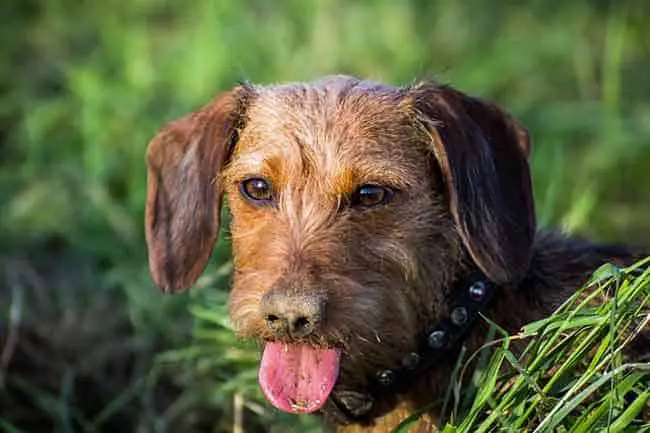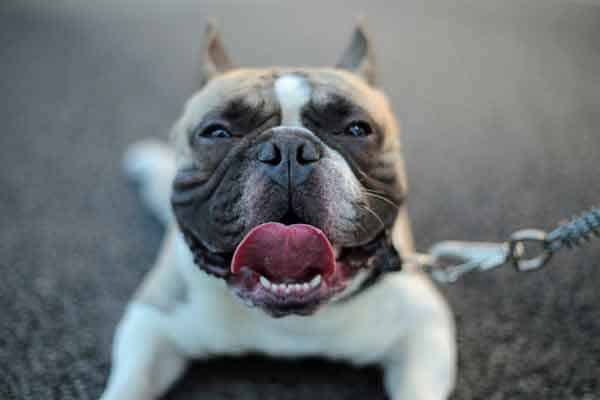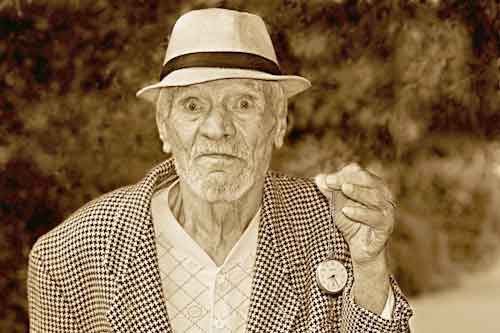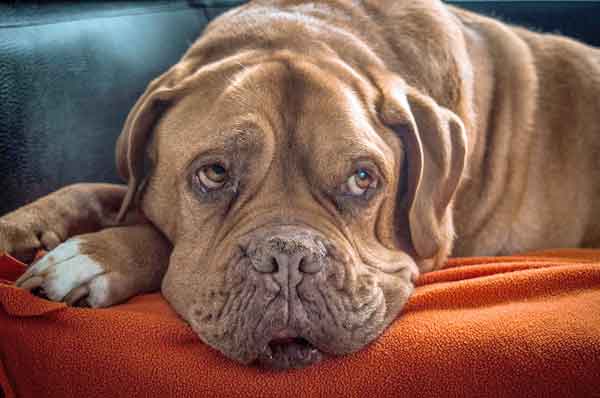Looking for a dog that sheds less? You might’ve heard that wirehaired dogs have a special coat when it comes to shedding.
Do Wirehaired Dogs Shed Less?
Wirehaired dogs shed less because they have a stronger coat. They typically have double-layered coats which means they will change from winter coat to summer coat in the early spring. But generally, they shed a lot less than other dog breeds and they are great for people with allergies.
Let’s take a look at some specific wirehaired dog breeds.
There are a lot of interesting facts to mention when we’re talking about shedding among the wirehaired breeds.
Table of Contents
How Much Do Wirehaired Dog Breeds Shed?

Wirehaired dog breeds are often referred to as not-shedding dogs.
As we will look at it in a second, this expression can be very misleading. So let’s just call them dogs that don’t shed as much as other dogs.
You should expect your wirehaired dog to shed just a little bit all throughout the year but this is easy to remove with a biweekly brushing routine.
You need to establish a brushing routine if you want to get rid of as much hair in your home as possible. This is true for all dog breeds.
The reason wirehaired dogs shed less than other breeds is found in the way the hair is structured. The hair is stronger and they have been bred to withstand cold and rough weather. This is also why they are often used as hunting dogs. They are amazingly robust breeds and they have strong fur that doesn’t shed as easily as other types of fur.
Let’s take a closer look at some of the most common wirehaired dog breeds.
How Much Do Wirehaired POINTERS Shed?
Wirehaired Pointers don’t shed much compared to other wirehaired breeds. However, they do have a double-layered coat which means they will shed a lot for 2-4 weeks in the early spring and in the late fall. They do so to change the winter coat to the summer coat (and vice versa).
All dog breeds with double-layered coat will shed a lot more in the early spring and late fall.
But the German Wirehaired Pointers are not shedding monsters at all. They will have a slight amount of shedding all through the year which you can easily remove by daily or biweekly brushing.
They are also pretty easy to groom because the wirehaired coat is water repellent and therefore dries up quickly.
This also means less smile whenever you bring the dog home from a walk in rainy weather (or a good swim).
How Much Do Wirehaired Griffons Shed?
Wirehaired Griffons don’t shed as much as an average dog. They will have a slight amount of shedding all-year-round and during the early spring and fall seasons, they will shed more for a few weeks to change the winter coat or the summer coat.
The Wirehaired Griffon dog is a great choice if you’re looking for a smaller medium-sized dog that doesn’t shed too much.
They are often referred to as a non-shedding breed because they are great for people with allergies. They require some grooming because their curly hair can tangle up.
So you need to brush the knots out of the hair and that would also get rid of the loose hair and reduce the shedding from the fur.
How Much Do Wirehaired TERRIERS Shed?
Wirehaired Terriers shed a lot because they are double-layered breeds. They need to get rid of the winter coat when spring arrives and they need access to lots of sunlight in order to detect when it’s time to change the coat. Otherwise, it might shed all-year-round.
We find several Terriers with wirehaired coats. They are great pets and they look really beautiful. But how about shedding with these types of dogs?
The wirehaired Terriers have an undercoat that will puff up during the cold season just like other dogs with double-layered coats. So you should expect more shitting going on in the spring in the fall whenever they go from winter coat to summer coat (and vice versa).
This goes for Fox terriers as well as Jack Russell terriers as well as the other wirehaired Terrier breeds.
How Much Do Wirehaired DACHSHUNDS Shed?
Wirehaired Dachshunds shed a lot in the spring because they have a double-layered coat. They need to get rid of the underlying winter coat when spring arrives and they do so by shedding extensively.
Because the wirehaired dachshunds have double-layered coats you should expect them to shed much more in the spring in the fall.
My grandparents had three Dachshunds and they were shedding monsters. They were mostly kept indoors which can be a big problem for dogs with double-layered coats.
You need to let the wirehaired Dachshunds get a lot of fresh air so they will get a sense of when the seasons change from winter to spring and from summer to fall. Otherwise, they will not know when to shed the winter coat and the summer coat.
This can become a big problem which often causes the wirehaired Dachshunds to shed extensively all through the year. So in order to avoid this (which you DON’T want to happen), you need to give your little friend a lot of fresh air. Especially during the early spring and late fall when it’s time to change their coat.
Are Wirehaired Dogs Hypoallergenic?

Wirehaired dogs are often chosen for people with allergies because they are hypoallergenic. They tend to shed less and therefore they are the optimal choice for people with allergies. If you brush them daily you can almost get rid of dog hair in your home.
More and more people are getting allergic to pet hair.
This is really a shame because it limits the number of dog breeds people can keep. This is where wirehaired dog breeds come in handy. They are really great for people with allergies because they shed a lot less.
Wirehaired dogs are also often referred to as non-shedding dog breeds.
This term can be very misleading because all dogs will shed some amount of hair no matter what you do. You can never get a dog that doesn’t shed at all unless you get a hairless dog (and they are not too cute if you ask me.)
So what we mean when we talk about non-shedding dogs are actually dogs that shed very little. And this is a great way to describe wirehaired dog breeds. The wirehaired breeds do not shed as much as other breeds such as long-haired and shorthaired breeds.
So, they are the optimal choice for people with allergies.
You can easily brush off the dead hairs from the dog’s coat with a brush and it’s a much quicker procedure with the wirehaired dog than with our dog breeds.
You just need to make sure you don’t push too hard whenever the art tank holds are not in the curly hair.
This leads us to the next section where we will take a look at how much grooming is required for wirehaired dogs compared to other types of dogs.
Do Wirehaired Dogs Need Grooming?
Wirehaired dogs sometimes need more grooming than other dog breeds.
This really depends on how you want your dog to appear.
Remember, that these dog breeds are sturdy and robust animals that are specially bred to withstand rough weather conditions. So they don’t need a lot of attention unless you want them to look sharp.
Sometimes the hair will get tangled up and cause little knots in the hair. This is almost unavoidable just like we find with long-haired dog breeds.
Whenever this happens you need to straighten out the tangled hairs with a “Curry Brush”. You can find our recommendations for the best types of brushes for each type of dogs here.
If you want a dog that (hardly) doesn’t need any grooming at all you should go with a short-haired dog.






